Foreword
These operating instructions are intended to make it easier to get to know the machine and to use it for its intended purpose.
The operating instructions contain important information on how to operate the machine safely, properly and economically. Observing them helps to avoid hazards, reduce repair costs and downtime, and increase the reliability and service life of the machine.
In addition to the operating instructions, the applicable national regulations for accident prevention and environmental protection must be observed.
The operating instructions must always be available at the place of use of the machine/plant.
The operating instructions must be read and applied by every person involved in work with/on the machine/plant, e.g. operation, including setup, troubleshooting in the work sequence, removal of production waste/disruptive materials, maintenance, disposal of operating and auxiliary materials.
- Operation, including set-up, troubleshooting workflow, removal of production waste/disruptive materials, maintenance, disposal of operating and auxiliary materials.
- Maintenance (servicing, inspection, cleaning) and/or
- Transportation
- Dismantling / disposal
is commissioned.
The operator of the plant must prepare operating instructions in understandable language and form for the plant. In addition to the operating instructions and the binding accident prevention regulations applicable in the country of use and at the place of use, the recognized technical rules for safe and professional work must also be observed.
Intended use
The trommel screen may only be used as intended.
The trommel screen in various designs is intended for classifying and screening of screenable, pre-loosened and dry screening material.
The following materials may be used as screenings:
- Soil excavation
- Bark mulch
- Gravel
- Sand
- Wood chips
- Green waste
- Biowaste
- Other dry screenable materials
The machine must stand level and free during operation in the outdoor area (no directly adjacent sieve hills).
Inside industrial buildings, the machine may only be operated directly from the mains (no genset operation). The building must have sufficient height for safe loading. Only the attached supports and not the support wheel may be used to ensure safe standing.
The screenings are loaded into the hopper by means of an earth-moving machine or other equipment. Manual loading is not as intended.
It is necessary to follow the steps described in the operating instructions.
In the event of deviations, it is necessary to carry out a new risk assessment in accordance with the Machinery Directive and to document the changes in the relevant documents.
Use of the machine for purposes other than those specified is prohibited.
Other intended uses include setting up the machine (bringing it into the operating position), performing cleaning and maintenance work, and troubleshooting, fault elimination and repair in accordance with the operating instructions.
Observe the following instructions to ensure trouble-free operation:
To prevent damage to the machine, please observe the following points: (Failure to do so will void the warranty).
- The fed material may only be fed to the machine in a loose, pressed-on state.
- Heavy, large foreign materials must be removed before feeding to the machine.
- The dust load in the effective area of the machine must not exceed the legally applicable limit values of the user country (in Germany, the Federal Immission Control Act must be observed).
- Long bulky parts must be removed or dissolved / crushed.
- Discharge speed of the conveyor belts must be adapted to the performance of the machine and the screening material.
Requirements for maintaining the functionality of the machine:
- Maintenance, servicing and inspection plans/logs must be kept and adhered to in order for warranty claims to be granted. Access to maintenance records must be possible at all times by the manufacturer.
- Malfunctions, failures, damage or defects to parts or assemblies must be reported to the manufacturer in writing within 24 hours if warranty claims are made.
In the event of malfunctions, damage or faults in one or more of the following components, the machine must be shut down immediately to prevent consequential damage:
- Electrical damage / fault on electrical drive components.
- Mechanical damage / fault on safety equipment.
- Mechanical damage / fault on drive elements / assemblies.
- Mechanical damage/fault on bearings and couplings.
- In the event of malfunctions, damage or faults on other elements or groups, the machine can continue to be operated until the time of repair after confirmation by the manufacturer.
- Elements or assemblies of other manufacturers listed in this operating manual which have been installed in the machine are subject to the operating, maintenance, servicing and inspection instructions of the respective manufacturers, unless otherwise described. Any promises to the contrary regarding deviations from these documents provided require confirmation by the respective manufacturer.
- Any promises to the contrary concerning deviations from the properties/conditions described in this operating manual and the maintenance, servicing and inspection plans/protocols provided by the manufacturer must be confirmed in writing by the manufacturer.
- The operating, maintenance, repair and inspection instructions valid at the time of delivery of the machine apply.
The validity remains for the user as long as the manufacturer has not provided the customer with more current operating, maintenance, servicing and inspection instructions and indicated compliance. The manufacturer reserves the right to make changes to the operating, maintenance, servicing and inspection instructions as well as technical changes in the interest of progress.
Machine overview
Gremac e2+r (wheel mobile)
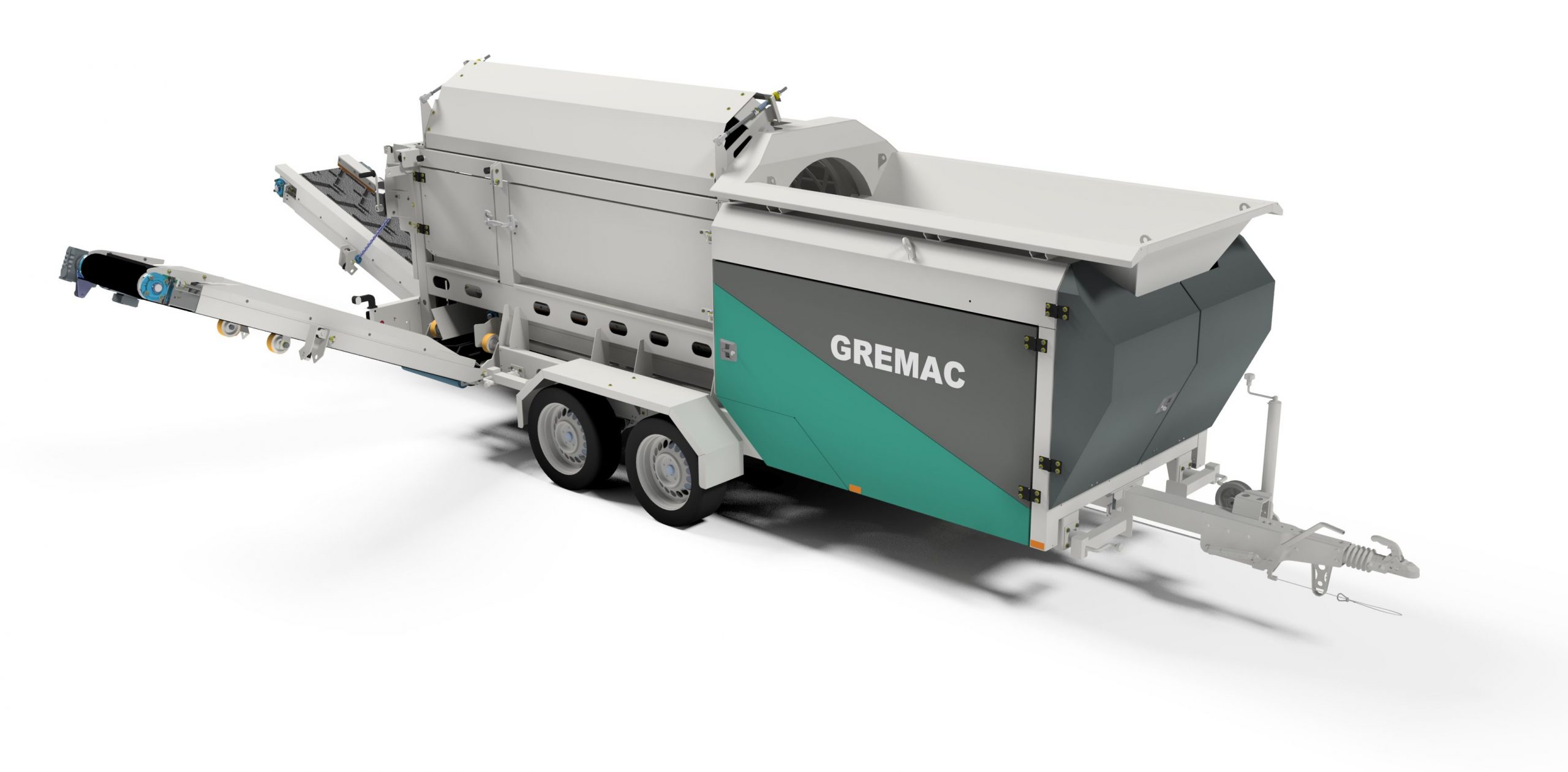
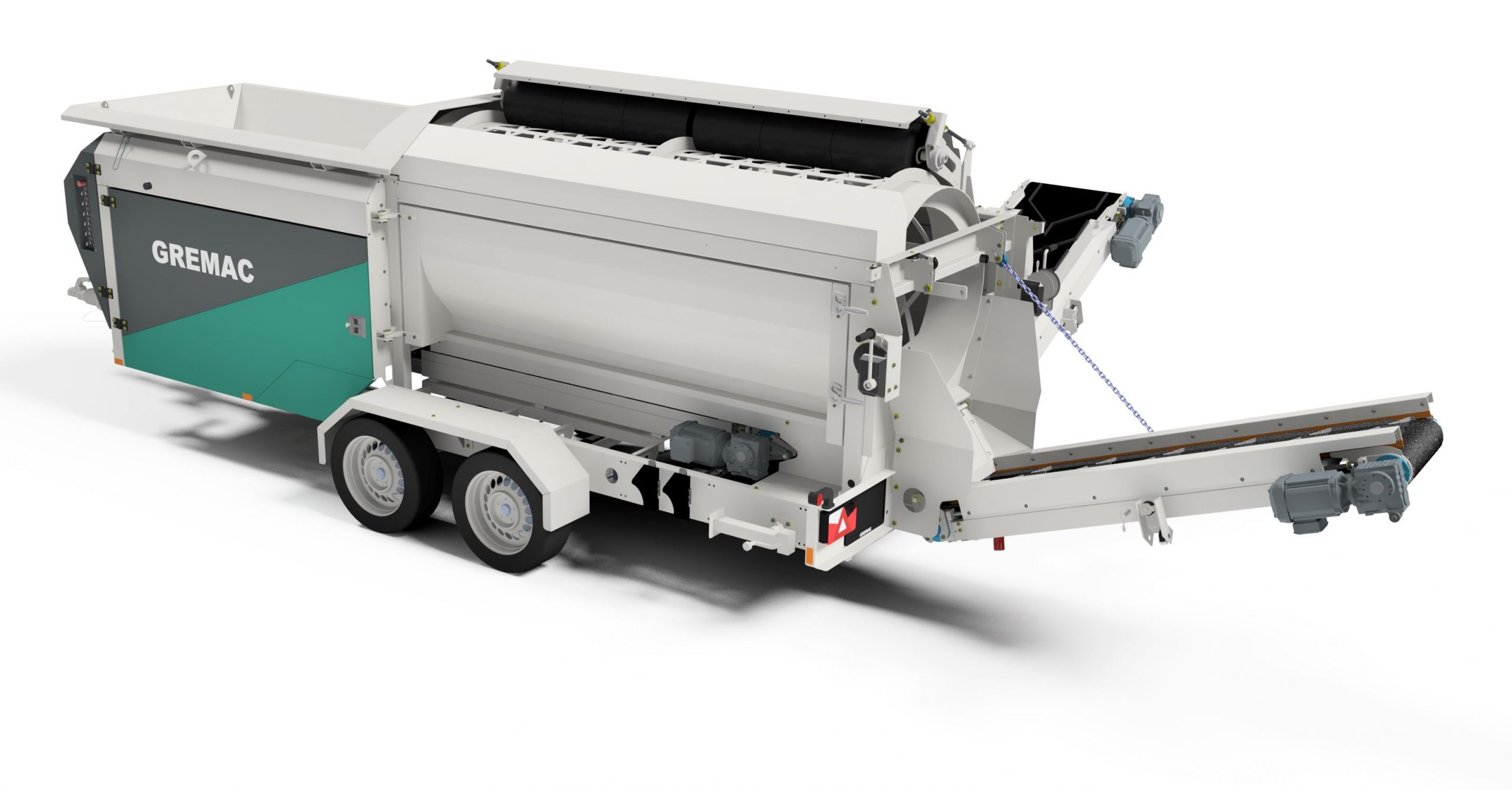
- Drawbar with hand brake and support wheel
- Left flap (control cabinet)
- Right flap (power generator)
- Sieve drum with cleaning brush
- Conveyor belt for screenings
- Folding stockpile conveyor for screenings
- Folding stockpile conveyor for oversize grains
- Bunker (maximum load: 500 kg)
- Support foot machine front
- Support feet machine rear (option)
- Operating unit
- Collection tape below the sieve drum
- Undercarriage (with road approval) or tracked undercarriage
- Rope winch for conveyor belt for oversize grain
- Cable winch for conveyor belt for screenings
Gremac e2+k (chain mobile)

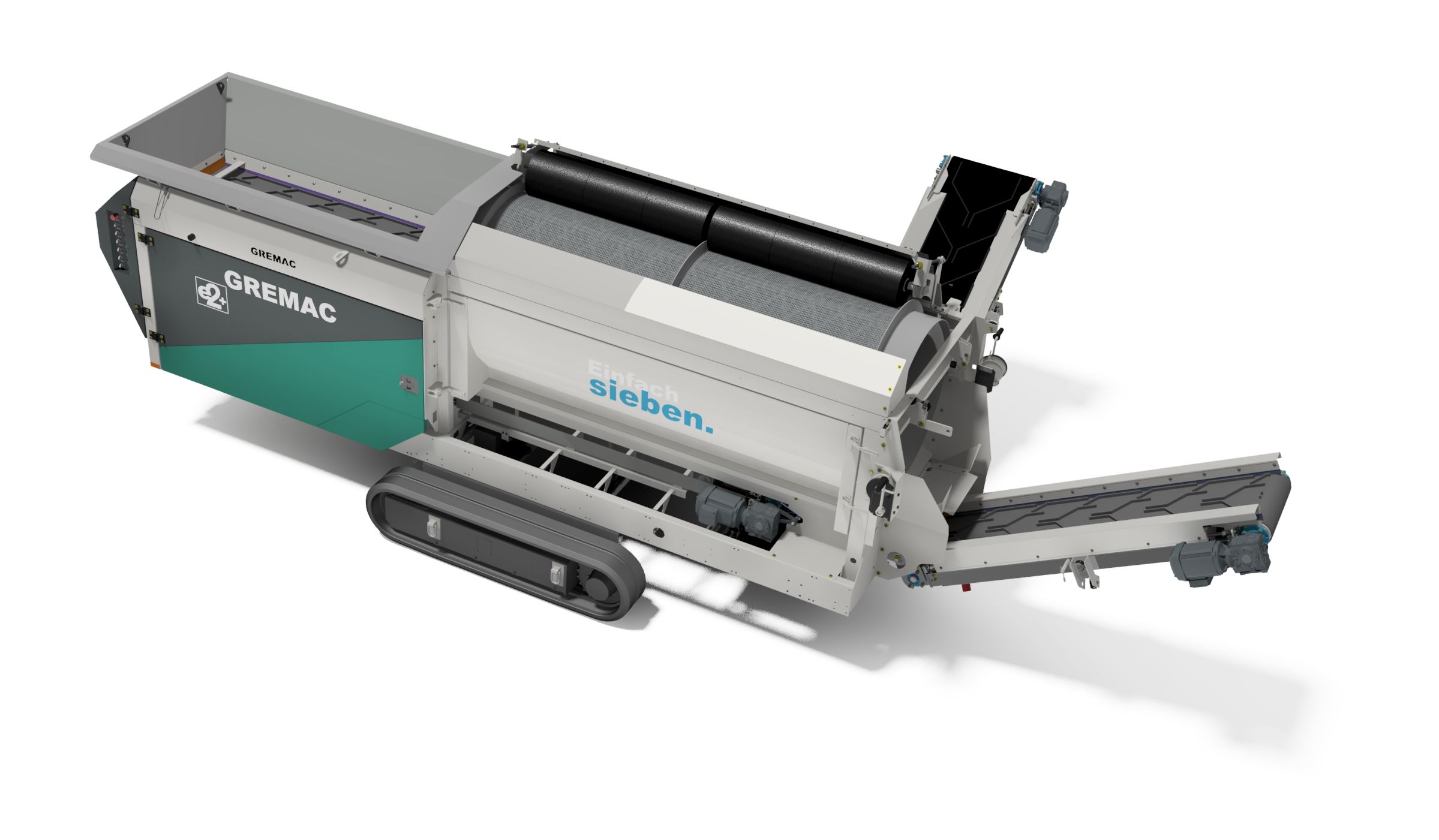
- Bunker (maximum load: 500 kg)
- Right flap (power generator)
- Sieve drum with cleaning brush
- Conveyor belt for screenings
- Folding stockpile conveyor for screenings
- Folding stockpile conveyor for oversize grains
- Cable winch for conveyor belt for screenings
- Chain drive
- Rope winch for conveyor belt for oversize grain
- Control panel
- Left flap (control cabinet)
- Maintenance door
Gremac e2+ (hook lift)
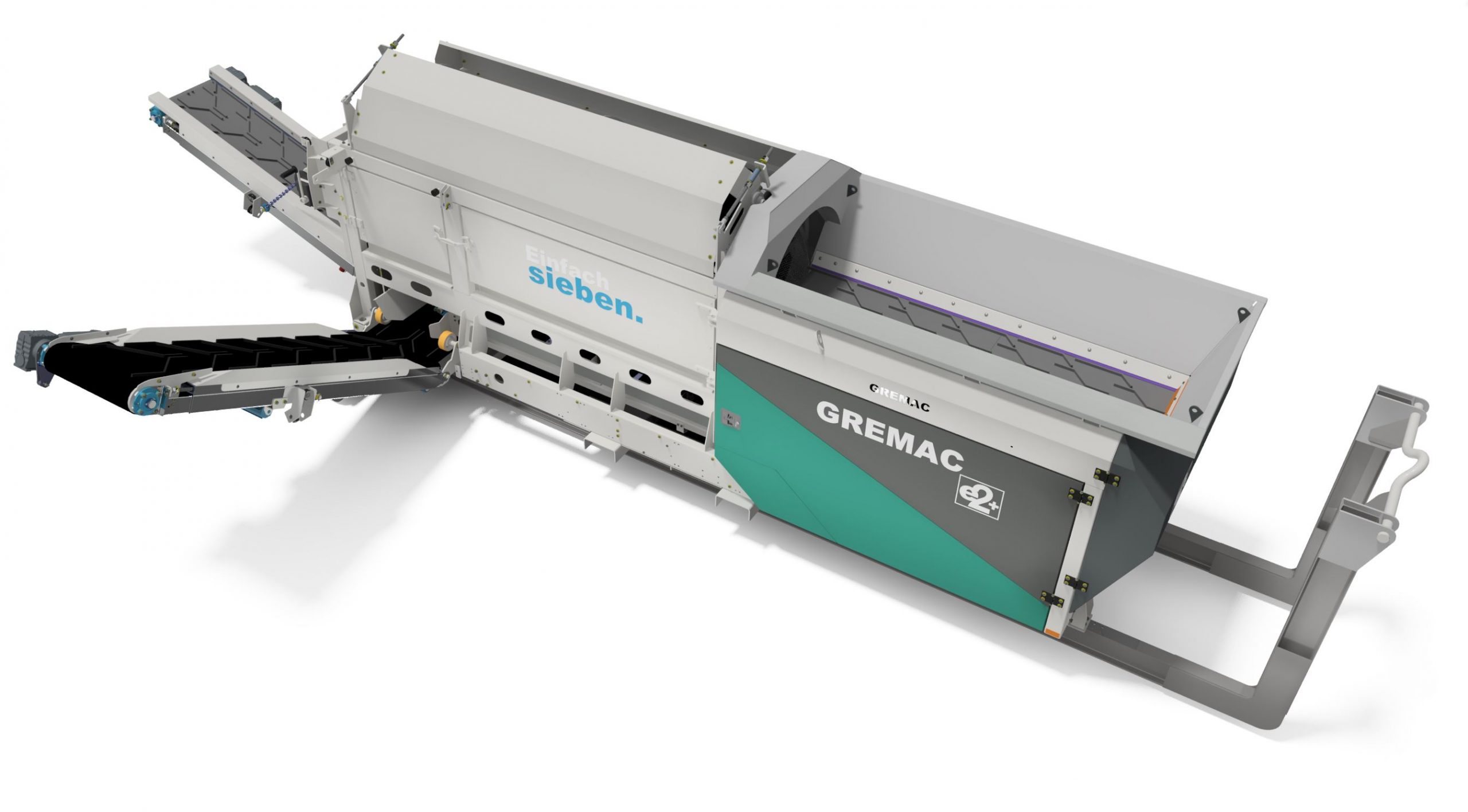
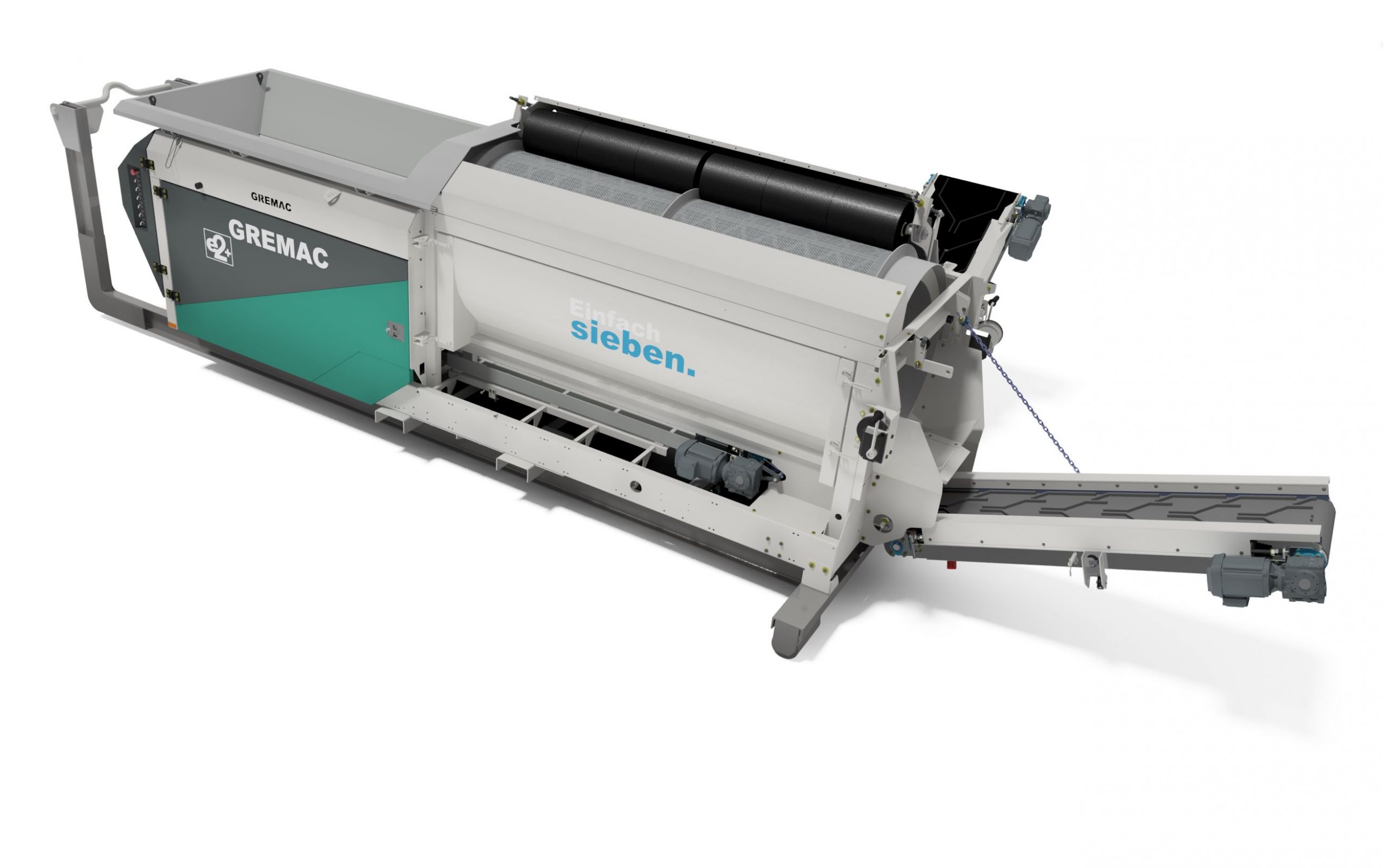
- Hook lift frame
- Bunker
- Sieve drum with cleaning brush
- Right flap (power generator)
- Conveyor belt for screenings
- Folding stockpile conveyor for screenings
- Folding stockpile conveyor for oversize grains
- Cable winch for conveyor belt for screenings
- Fixture for forklift transport
- Control panel
- Left flap (control cabinet)
- Maintenance door
- Rope winch for conveyor belt for oversize grain



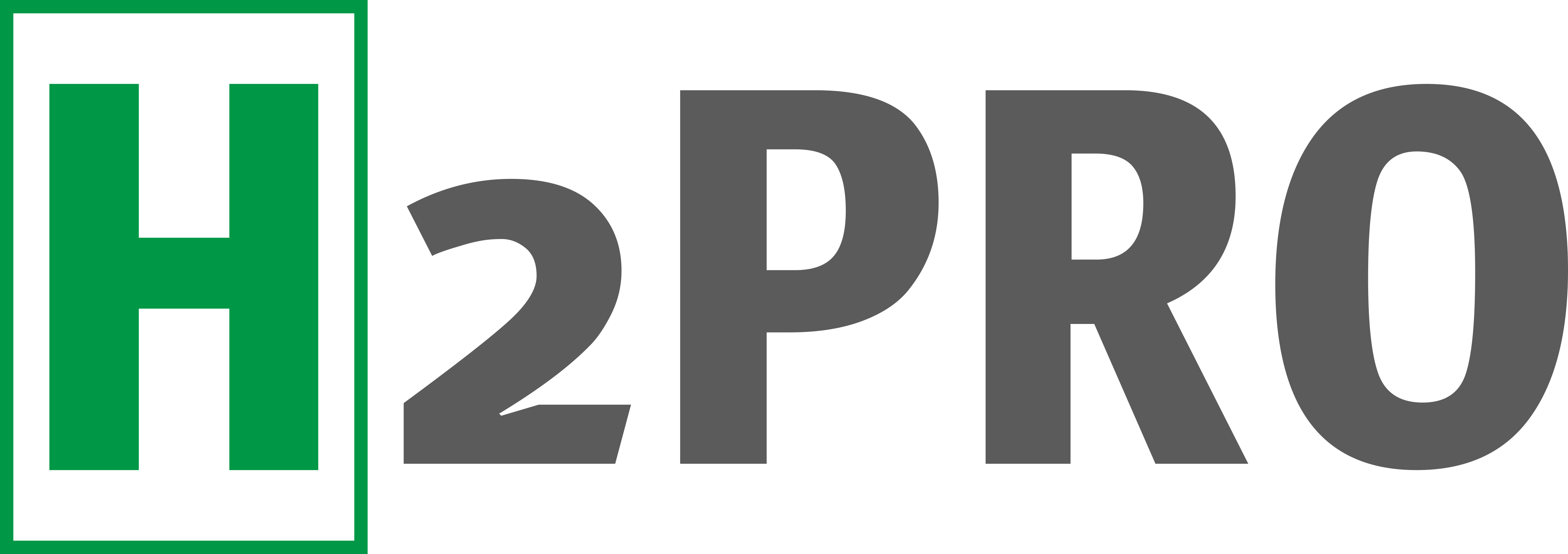
Leave A Comment